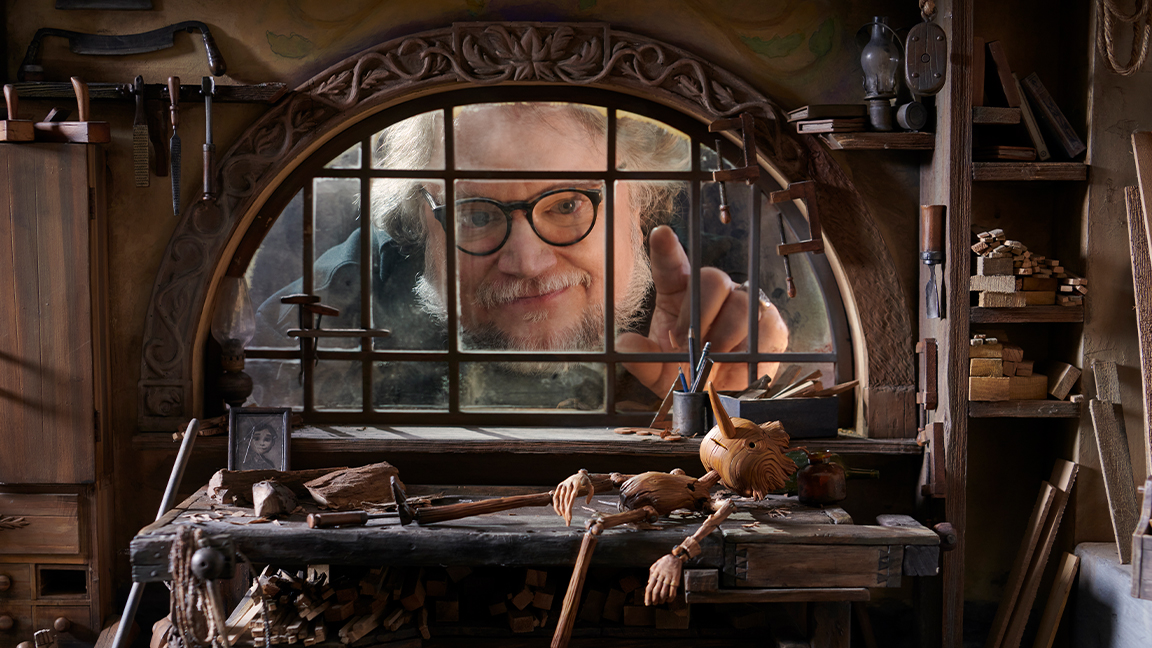The 8 rules of movie animation, according to Guillermo del Toro
The rules of animation everyone should know, according to master filmmaker Guillermo del Toro.
Oscar-winning filmmaker Guillermo del Toro has shared his eight rules of animation. While for most people, Guillermo del Toro is viewed as a live-action filmmaker, this misperception was corrected with the Netflix release of Guillermo del Toro’s Pinocchio.
In fact, it was stop-motion that set him on the path to become an acclaimed director responsible for The Shape of Water, Pan’s Labyrinth, and Pacific Rim. "The funny thing is that I made the transition from stop-motion to live action," he reveals. "I started learning [how to be a filmmaker] by making animated shorts and still have the stop-motion camera that I bought in my hometown [of Guadalajara, Mexico]."
Guillermo del Toro has a track record of producing and co-directing some of the best animated movies of the last 10 years, beginning at DreamWorks with Trollhunters, Puss in Boots, Kung Fu Panda 3, Megamind and Rise of the Guardians. Even Pacific Rim is 45 minutes of animation directed by del Toro.
Below Guillermo del Toro shares his eight rules of animation, which complement Disney's 12 principles of animation that have dominated the art form for decades. In fact, together you get the best of 2D and the best insights into 3D animation. Below are the film director's top tips for animation.
Guillermo del Toro's 8 rules of animation

01. Animate silence
Seek to animate the characters’ listening. Cut to the characters listening / thinking. In live action, one of the paradigms of acting is to learn to listen. It’s an art and the occasion to see the cogwheels of thought turn. Please animate this before charging into an answer or a line.
02. Animate the mistakes
We often take three moves to put on a shoe, two tries to close a door, or stumble on a step. We place our hand on a wall and lean on it for a moment, and then find a better hold and move our hand. Animate these ‘mistakes’.
03. Animate throwaway physical truth
Does the character have a small itch on the forehead? Does he/she need to clear his/her throat? An itch in a shoulder, a pain in a wrist? When the character sits down, it is heavy, tired; does he/she tap fingers on a knee? Straighten his/her shirt, pants, skirt? Shift a knee, shift weight from one foot to another, rub an elbow, a wrist? Pick a scab, clean their nails, check a scar, and so on?
04. Don't always make eye contact
I detest characters always holding eye contact in animation. We often avoid looking into each other’s eyes. When we do, make it count. Our eyes dart all around each other’s face. We lovingly look at the forehead, eyes, lips of our beloved ones, while we lock eyes with our enemies or size them up head to toe. Use the eyes and eye contact.
05. Select pantomime carefully
Do not rely on key poses in the traditional way. Some characters will lend themselves to this, but not all. Volpe is Tex Avery’s Wolf in his extremes, but not always. The pantomime should be used to punctuate, and only with the pertinent characters.
06. Seek life
Think of the scene the way it would normally be animated and then tell us what is the unexpected way; the thing that will make it breathe. Even if we don’t take that route, indicate it. Always.
07. Animation is spatially symphonic
Characters occupy spaces and use movement differently. The Priest is very reserved, stiff-jointed, exists in a narrow cylinder of space, doesn’t ‘break’ that space. Podesta would be immodest and expansive in his appropriation of space. Volpe glides, and so on. Each character adds a note to the movement symphony.
08. Age informs movement
Young Geppetto and old Geppetto have different bone, cartilage and senses of weight. Joints hurt more the older you are. But Carlo and Pinocchio should behave exactly as kids do. Look around you, find nuggets of joy to animate, and take from real kids.
Why not put these eight rules of animation into practice? You'll likely need one of the best laptops for animation, particularly if you're planning to use a 3D software. Read our Blender review for insights into one of the best 3D apps for animation. Also, consider a new drawing tablet, the Xencelabs Pen Tablet Medium bundle is great value.
This article was originally published in issue 298 of 3D World Magazine. You can subscribe to 3D World at the Magazines Direct website and get 3 issues for £3. The magazine ships internationally.
Read more:
Daily design news, reviews, how-tos and more, as picked by the editors.

Trevor Hogg is a freelance video editor and journalist, who has written for a number of titles including 3D World, VFX Voice, Animation Magazine and British Cinematographer. An expert in visual effects, he regularly goes behind the scenes of the latest Hollywood blockbusters to reveal how they are put together.
- Ian DeanEditor, Digital Arts & 3D
